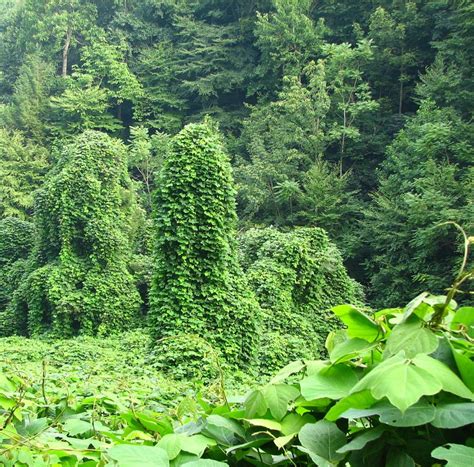Kudzu Plant. In one study, a treatment regimen of 0.5 grams (g) of the product was applied intravaginally daily for 2 weeks, and then decreased to three times per week for 10 weeks, kudzu gel was found to be safe and effective, although it was less effective than estrogen cream. According to research published in 2010 (hickman et al.), kudzu ( pueraria montana ) invasion doubles emissions of nitric oxide and increases ozone pollution.

Government supposedly paid farmers to plant kudzu as a ground cover and as a forage. Kudzu's root, flower, and leaf are used to make medicine. As far the the root goes, you can cook kudzu roots like potatoes, or dry them and grind them into powder, which makes a great breading for fried foods or a thickener for sauces.
Tropical Kudzu, Like Most Legume Forages, Is Rich In Protein (About 20%, Ranging From 13 To 25% Of Dm).
According to research published in 2010 (hickman et al.), kudzu ( pueraria montana ) invasion doubles emissions of nitric oxide and increases ozone pollution. Kudzu is a deciduous vine with long, thick rhizomes, hairy stems, and trefoil leaves. Kudzu plants lose their leaves in winter leaving this house in a prison of vines.
The Purple Flowers Are Fragrant And Appear In 25 Cm Long, Erect Clusters.
Bioplastics are made from the starch of plants. There were kudzu queens and regionwide kudzu planting contests. As far the the root goes, you can cook kudzu roots like potatoes, or dry them and grind them into powder, which makes a great breading for fried foods or a thickener for sauces.
Kudzu Is A Perennial Invasive Vine First Introduced To The United States From Its Native Asia In 1876.
Kudzu spreads by production of below and above ground lateral stems called rhizomes and stolons. The plant was first brought to north america in 1876 to landscape a garden at the united states centennial exposition in philadelphia, pennsylvania. These stems will root at the nodes.
The Kudzu Plant Actually Produces Fragrant, Purple Blossoms, Which Are Made Into Jellies, Syrups And Candies.
It occasionally also reproduces by seed.the seeds can be dispersed in water and contaminated soil, while the stem segments and rhizomes can be spread in dumped garden waste and contaminated soil. Lobata) reproduces mainly vegetatively by runners (i.e. In one study, a treatment regimen of 0.5 grams (g) of the product was applied intravaginally daily for 2 weeks, and then decreased to three times per week for 10 weeks, kudzu gel was found to be safe and effective, although it was less effective than estrogen cream.
They Are Followed By Flat, Hairy Seeds That Divide When They Are Mature.
Kudzu is native to china and japan, where it has long been grown for its edible starchy roots and for a fibre made from its stems. Kudzu is in the fabaceae (or leguminosae) family. For a long time, it was viewed as a “wonder plant—in fact, in the 1930s, the government paid landowners in the southeastern united states $8 per acre to plant kudzu for erosion control and cattle grazing.
